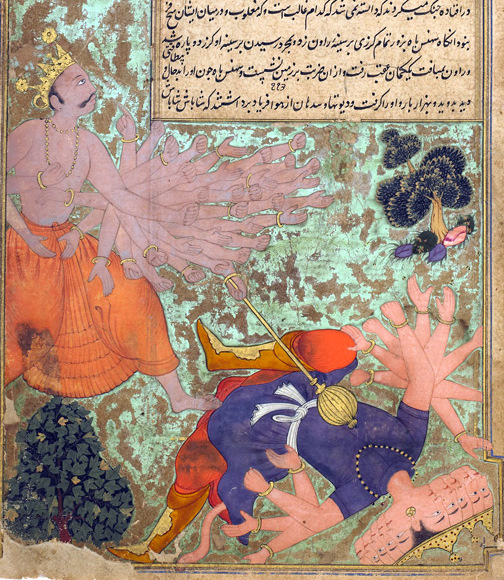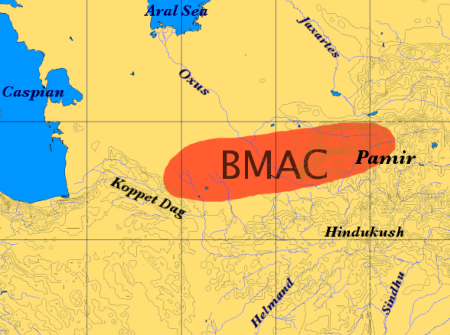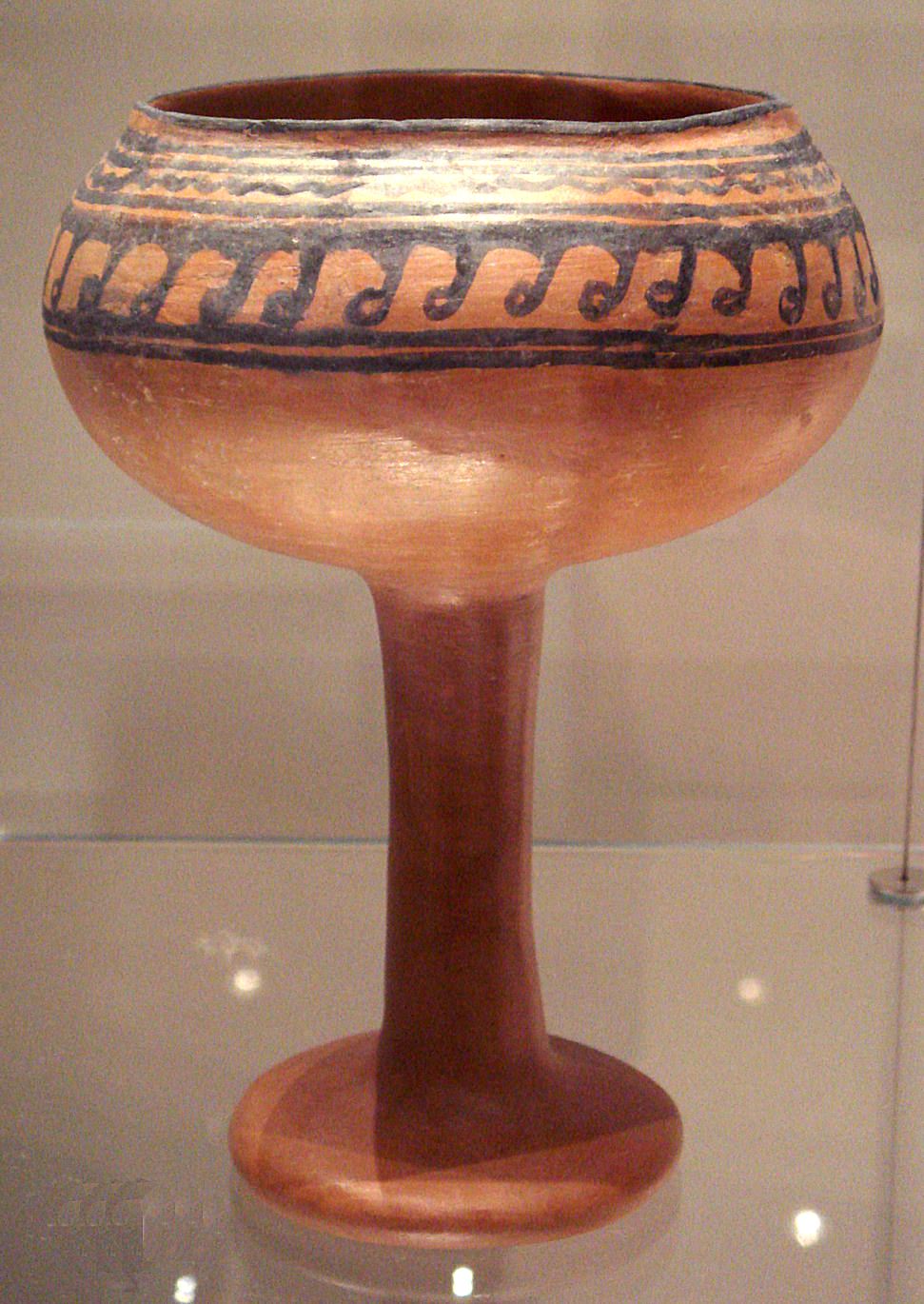|
Haihaya
The Heheya Kingdom (also known as Haihaya, Haiheya, Heiheya sa">हैहय was a kingdom ruled by the Yadava people, who claimed to be descended from Yadu, a legendary king of Chandravamsha lineage. One of the most well known Haihaya rulers was Kartavirya Arjuna. It is believed that the Kingdom was involved with a number of conflicts with neighboring kingdoms, and it is believed that it was ultimately defeated by the Bhargava leader Parashurama. The capital of the Heheya Kingdom was Mahishmati, located on the banks of the Narmada River in present-day Madhya Pradesh. Haihaya clans The Haihayas were an ancient confederacy of five ''gana''s (clans), who claimed their common ancestry from Yadu. According to the ''Harivamsha Purana'' (34.1898), Haihaya was the great-grandson of Yadu and grandson of Sahasrajit.Pargiter, F.E. (1972) 922 ''Ancient Indian Historical Tradition'', Delhi: Motilal Banarsidass, p.87. In the ''Vishnu Purana'' (IV.11), all the five Haihaya clans ar ... [...More Info...] [...Related Items...] OR: [Wikipedia] [Google] [Baidu] |
Yadava
The Yadava (literally, descended from Yadu) were an ancient Indian people who believed to be descended from Yadu, a legendary king of Chandravamsha lineage. The community was formed of various clans, being the Abhira, Andhaka, Vrishni, and Satvatas, who all worshipped Krishna. They are listed in ancient Indian literature as the segments of the lineage of Yadu (''Yaduvamsha'').Thapar, Romila (1978, reprint 1996). ''Ancient Indian Social History: Some Interpretations'', New Delhi: Orient Longman, , p.223 At various times there have been a number of communities and royal dynasties of the Indian subcontinent that have claimed descent from the ancient Yadava clans and legendary Yadava personalities, thus describing themselves as the Yadavas. The sociologist M. S. A. Rao and historians such as P. M. Chandorkar and T. Padmaja say that epigraphical and historical evidence exists for equating the Ahirs with the ancient Yadava clan. The Yadavas of the Mahabharata period were known t ... [...More Info...] [...Related Items...] OR: [Wikipedia] [Google] [Baidu] |
Mahishmati
Mahishmati ( IAST: Māhiṣmatī) was an ancient city in present-day central India. It was located in present-day Madhya Pradesh, on the banks of Narmada River, although its exact location is uncertain. It is mentioned in several ancient texts, and is said to have been ruled by the legendary Haihaya ruler Kartavirya Arjuna. Mahishmati was the most important city in the southern part of the Avanti kingdom, and later served as the capital of the Anupa Kingdom. The city may have flourished as late as until 13th century, as indicated by a Paramara inscription. Identification The following things are known about Mahishmati's location: * It was located on the banks of the Narmada river. * It was located to the south of Ujjayini, and north of Pratishthana, on the route connecting the two cities (according to ''Sutta Nipata''). Patanjali mentions that a traveler starting out from Ujjayini saw the sunrise at Mahishmati. * It was located in the Avanti kingdom, and at times w ... [...More Info...] [...Related Items...] OR: [Wikipedia] [Google] [Baidu] |
Yadu
This is a list of ancient Indo-Aryan peoples and tribes that are mentioned in the literature of Indic religions. From the second or first millennium BCE, ancient Indo-Aryan peoples and tribes turned into most of the population in the northern part of the Indian subcontinent – Indus Valley (roughly today's Punjab), Western India, Northern India, Central India, and also in areas of the southern part like Sri Lanka and the Maldives through and after a complex process of migration, assimilation of other peoples and language shift.Mallory, J.P.; Douglas Q. Adams (1997). Encyclopedia of Indo-European Culture. London: Fitzroy Dearborn Publishers. . Ancestors *Proto-Indo-Europeans (Proto-Indo-European speakers) **Proto-Indo-Iranians (common ancestors of the Iranian, Nuristani and Indo-Aryan peoples) (Proto-Indo-Iranian speakers) ***Proto-Indo-Aryans (Proto-Indo-Aryan speakers) Vedic tribes * Alina people (RV 7.18.7) * Andhras * Anu (RV 1.108.8, RV 8.10.5) * Āyu * Bhajeratha * ... [...More Info...] [...Related Items...] OR: [Wikipedia] [Google] [Baidu] |
Kartavirya Arjuna
Kartavirya Arjuna ( sa, कार्तवीर्य अर्जुन, ; also known as Sahasrabahu Arjuna or Sahasrarjuna) was a king of an ancient Haihayas kingdom with capital at Mahishmati which is on the banks of Narmada River in the current state of Madhya Pradesh. Kartavirya was son of Kritavirya, king of the Haihayas. According to the Puranas, Haihaya was the grandson of Sahasrajit, son of Yadu. This is his patronymic, by which he is best known; he is also referred to simply as Arjuna. He is described as having a thousand hands and a great devotee of god Dattatreya. One of the several such accounts states that Arjuna conquered Mahishmati city from Karkotaka Naga, a Naga chief and made it his fortress-capital.Pargiter, F.E. (1972) 922 ''Ancient Indian Historical Tradition'', Delhi: Motilal Banarsidass, p.265-7 Almost 100 manuscripts on the worship of Kārtavīrya have been found mostly in the royal libraries of the Hindu Rajas. The states in which the manu ... [...More Info...] [...Related Items...] OR: [Wikipedia] [Google] [Baidu] |
Sahasrabahu
Kartavirya Arjuna ( sa, कार्तवीर्य अर्जुन, ; also known as Sahasrabahu Arjuna or Sahasrarjuna) was a king of an ancient Haihayas kingdom with capital at Mahishmati which is on the banks of Narmada River in the current state of Madhya Pradesh. Kartavirya was son of Kritavirya, king of the Haihayas. According to the Puranas, Haihaya was the grandson of Sahasrajit, son of Yadu. This is his patronymic, by which he is best known; he is also referred to simply as Arjuna. He is described as having a thousand hands and a great devotee of god Dattatreya. One of the several such accounts states that Arjuna conquered Mahishmati city from Karkotaka Naga, a Naga chief and made it his fortress-capital.Pargiter, F.E. (1972) 922 ''Ancient Indian Historical Tradition'', Delhi: Motilal Banarsidass, p.265-7 Almost 100 manuscripts on the worship of Kārtavīrya have been found mostly in the royal libraries of the Hindu Rajas. The states in which the manuscripts ... [...More Info...] [...Related Items...] OR: [Wikipedia] [Google] [Baidu] |
Bhargava
Bhargava () or Bhṛguvamsha refers to a Brahmin race or dynasty that is said to have been founded by the legendary Hindu sage, Bhrigu. Legend In Hinduism, the Bhargavas are the purohitas, the family priests, of the daityas and the danavas. They are regarded to be associated with the Angiras, the Atharvans, and the Ribhus, races named for their founders, who were also great sages. Some of the notable characters in Hinduism who belong to the Bhargava race include: * Chyavana * Shukra * Shaunaka * Richika * Jamadagni * Parashurama * Valmiki The rulers of the Haihaya dynasty are first described to be great patrons of Bhargavas such as Richika, to whom the latter served as the chief priest. When his son, Jamadagni, is murdered by the Haihaya king, Kartavirya Arjuna, his son, Parashurama, the incarnation of Vishnu, slays him. When his resurrected father is killed once more by the king's son, he begins a quest to wipe out all the Kshatriya rulers he could find on earth, and ... [...More Info...] [...Related Items...] OR: [Wikipedia] [Google] [Baidu] |
Yadu (legendary King)
Yadu () is the founder of the Yadu dynasty in Hinduism. He is described to be the eldest son of King Yayati, and his queen, Devayani. Legend According to a narrative found in the Mahabharata, and the Vishnu Purana, Yadu refused to exchange his years of youth with his father, Yayati, when the latter was cursed with senility by his father-in-law, Shukra. Thus, he was cursed by Yayati to have his progeny disinherited of the dominion. Due to this proclamation, Yadu was replaced by his step-brother, Puru, as the heir to the throne of the Chandravamsha dynasty. Yadu founded his own cadet branch of the dynasty, called the Yaduvamsha. Descendants The Agni Purana states that Yadu's lineage was continued by his eldest son, Sahasrajit. Sahasrajit had three sons: Haihaya, Reṇuhaya, and Haya. A historical dynasty called the Haihayas claimed descent from Haihaya. Several castes and communities in modern India, such as Ahir or Yadav, Chudasama, claim descent from Yadu. See also ... [...More Info...] [...Related Items...] OR: [Wikipedia] [Google] [Baidu] |
Malwa
Malwa is a historical region, historical list of regions in India, region of west-central India occupying a plateau of volcanic origin. Geologically, the Malwa Plateau generally refers to the volcanic plateau, volcanic upland north of the Vindhya Range. Politically and administratively, it is also synonymous with the former state of Madhya Bharat which was later merged with Madhya Pradesh. At present the historical Malwa region includes districts of western Madhya Pradesh and parts of south-eastern Rajasthan. Sometimes the definition of Malwa is extended to include the Nimar region south of the Vindhyas. The Malwa region had been a separate political unit from the time of the ancient Malava Kingdom. It has been ruled by several kingdoms and dynasties, including the Avanti (India), Avanti Kingdom, The Maurya Empire, Mauryans, the Malavas, the Gupta Empire, Guptas, the Paramaras, the Delhi Sultanate, the Malwa Sultanate, Malwa sultans, the Mughal Empire, Mughals and the Maratha E ... [...More Info...] [...Related Items...] OR: [Wikipedia] [Google] [Baidu] |
Ravana
Ravana (; , , ) is a rakshasa king of the island of Lanka, and the chief antagonist of the Hindu epic ''Ramayana'' and its adaptations. In the ''Ramayana'', Ravana is described to be the eldest son of sage Vishrava and rakshasi Kaikesi. He abducted Prince Rama's wife Sita and took her to his kingdom of Lanka, where he held her in the Ashoka Vatika. Later, Rama, with the support of vanara King Sugriva and his army of vanaras, launched an invasion against Ravana in Lanka. Ravana was subsequently slain and Rama rescued his beloved wife Sita. Ravana is widely portrayed to be an evil character, though he also has many qualities that make him a learned scholar. He was well-versed in the six shastras and the four Vedas. Ravana is also considered to be the most revered devotee of Shiva. Images of Ravana are seen associated with Shiva at some temples. He also appears in the Buddhist Mahayana text '' Laṅkāvatāra Sūtra'', in Buddhist Ramayanas and Jatakas, as well as in ... [...More Info...] [...Related Items...] OR: [Wikipedia] [Google] [Baidu] |
Lanka
Lanka (, ) is the name given in Hindu epics to the island fortress capital of the legendary asura king Ravana in the epics of the ''Ramayana'' and the ''Mahabharata''. The fortress was situated on a plateau between three mountain peaks known as the Trikuta Mountains. The ancient city of Lankapura is said to have been burnt down by Hanuman. After its king, Ravana was killed by Rama with the help of Ravana's brother Vibhishana, the latter was crowned king of Lankapura. His descendants were said to still rule the kingdom during the period of the Pandavas. According to the ''Mahabharata'', the Pandava Sahadeva visited this kingdom during his southern military campaign for the rajasuya of Yudhishthira. Ramayana The island was situated on a plateau between three mountain peaks known as the Trikuta Mountains. The ancient city of Lankapura is thought to have been burnt down by Hanuman. After its king, Ravana was killed by Rama with the help of Ravana's brother Vibhisha ... [...More Info...] [...Related Items...] OR: [Wikipedia] [Google] [Baidu] |
Vayu Purana
The ''Vayu Purana'' ( sa, वायुपुराण, ) is a Sanskrit text and one of the eighteen major Puranas of Hinduism. ''Vayu Purana'' is mentioned in the manuscripts of the Mahabharata and other Hindu texts, which has led scholars to propose that the text is among the oldest in the Puranic genre. Vayu and Vayaviya Puranas do share a very large overlap in their structure and contents, possibly because they once were the same, but with continuous revisions over the centuries, the original text became two different texts, and the Vayaviya text came also to be known as the '' Brahmanda Purana''. The ''Vayu Purana'', according to the tradition and verses in other Puranas, contains 24,000 verses ( shlokas). However, the surviving manuscripts have about 12,000 verses. The text was continuously revised over the centuries, and its extant manuscripts are very different. Some manuscripts have four ''padas'' (parts) with 112 chapters, and some two ''khandas'' with 111 chapters. Com ... [...More Info...] [...Related Items...] OR: [Wikipedia] [Google] [Baidu] |








